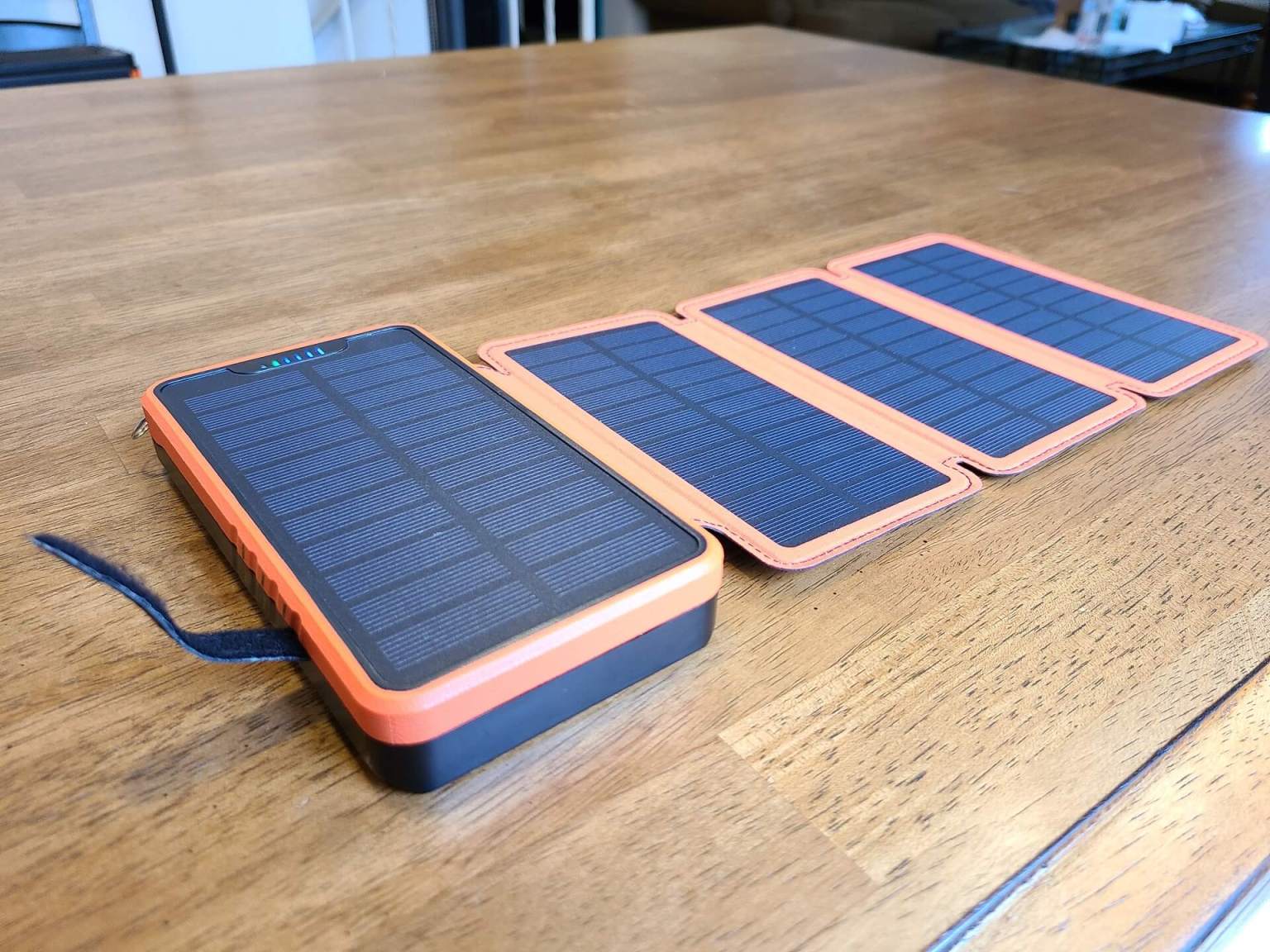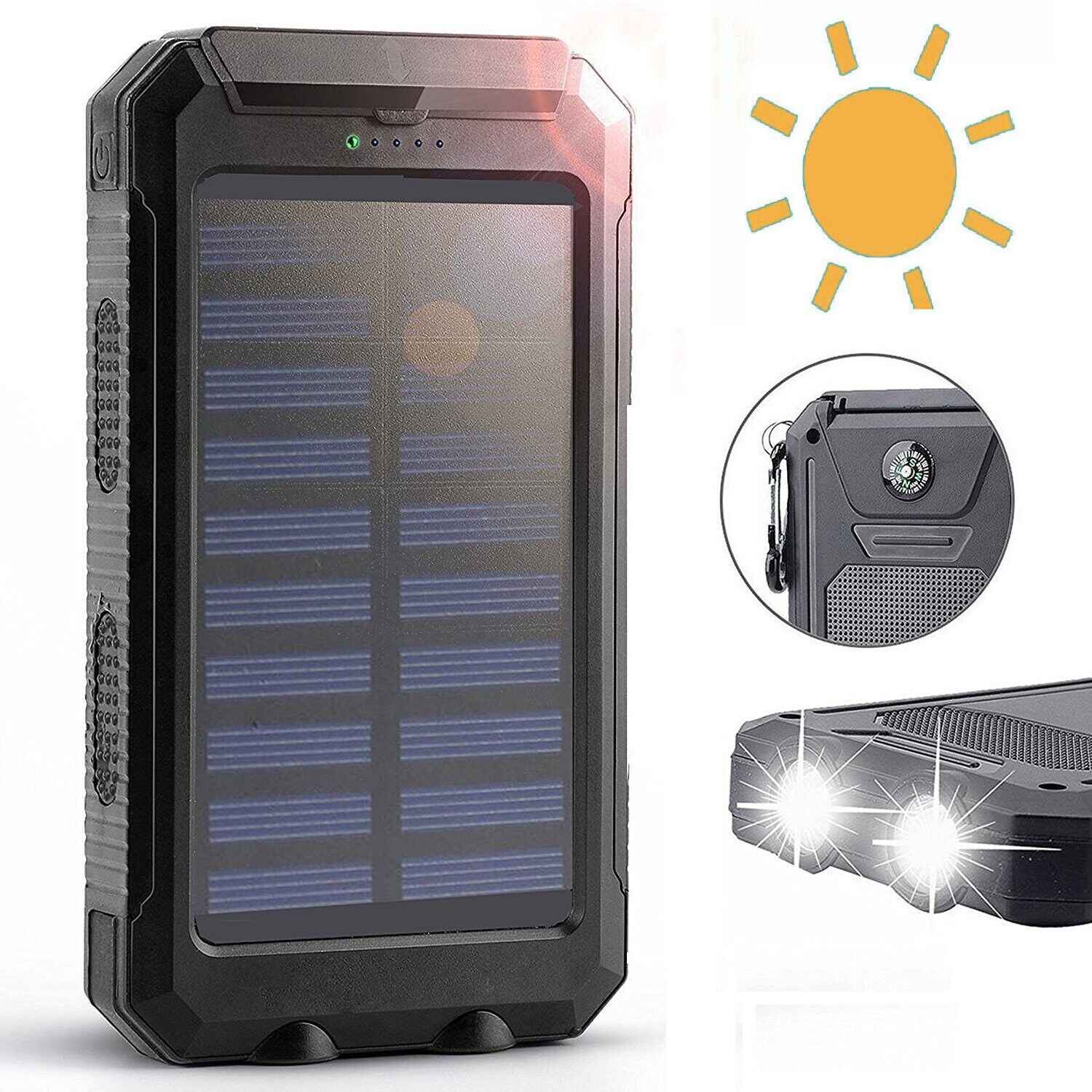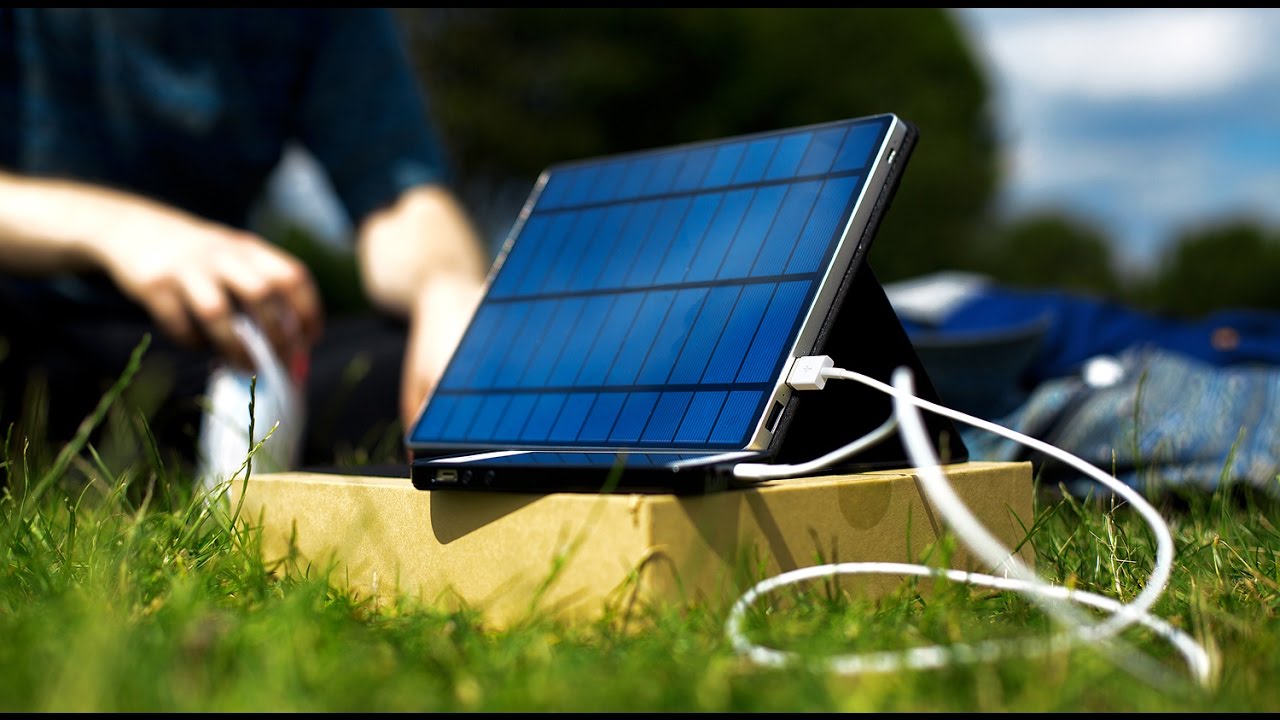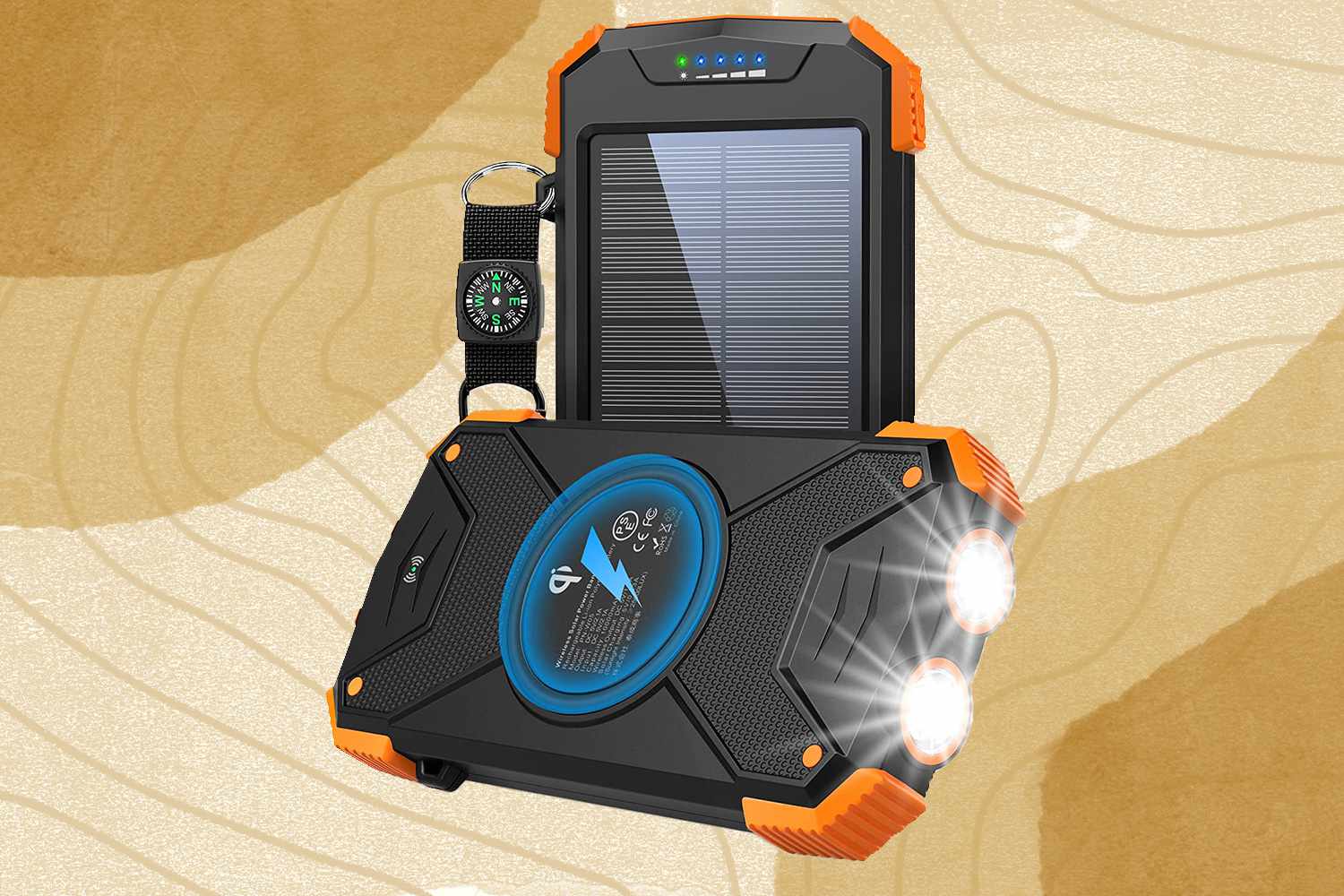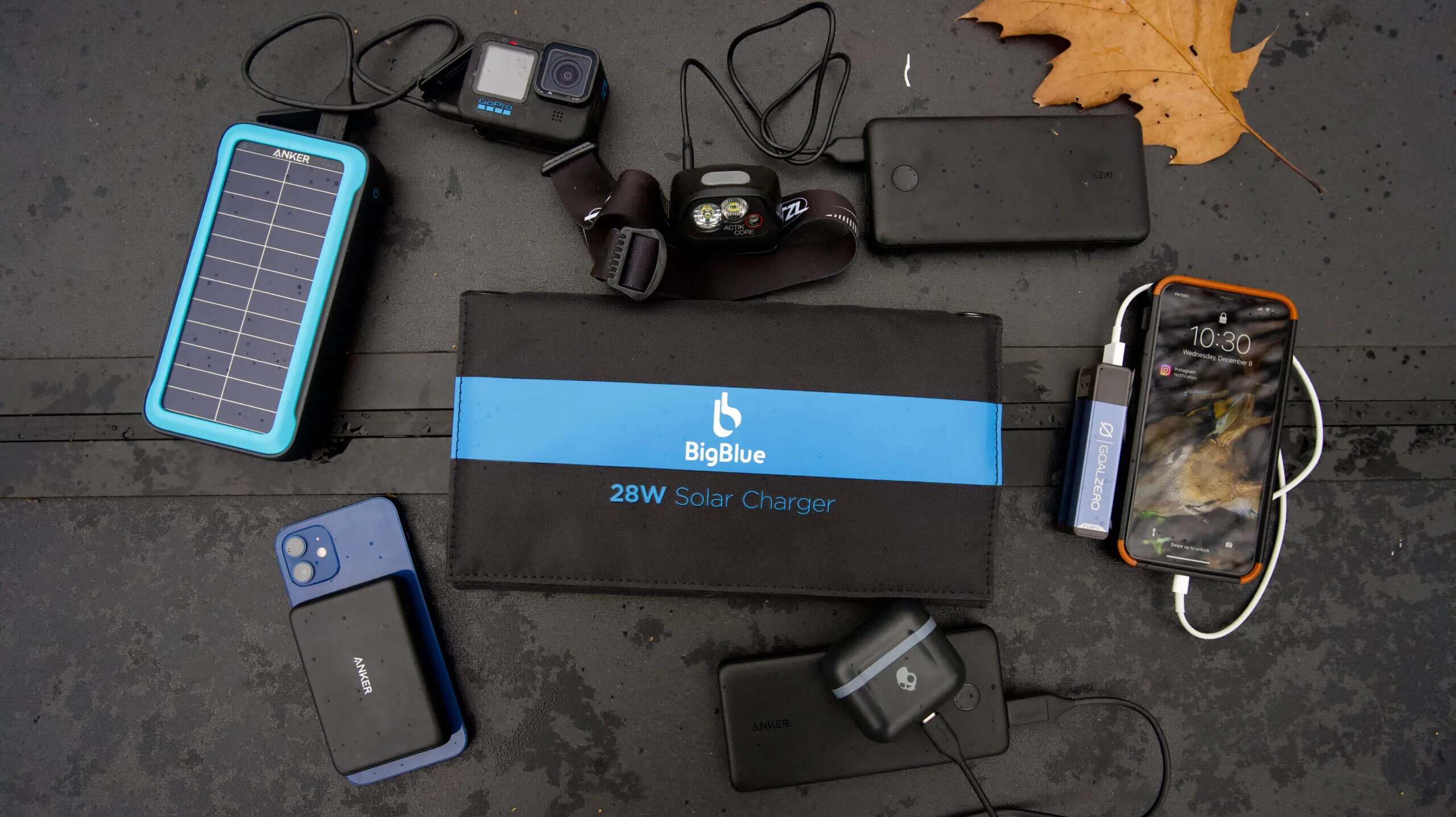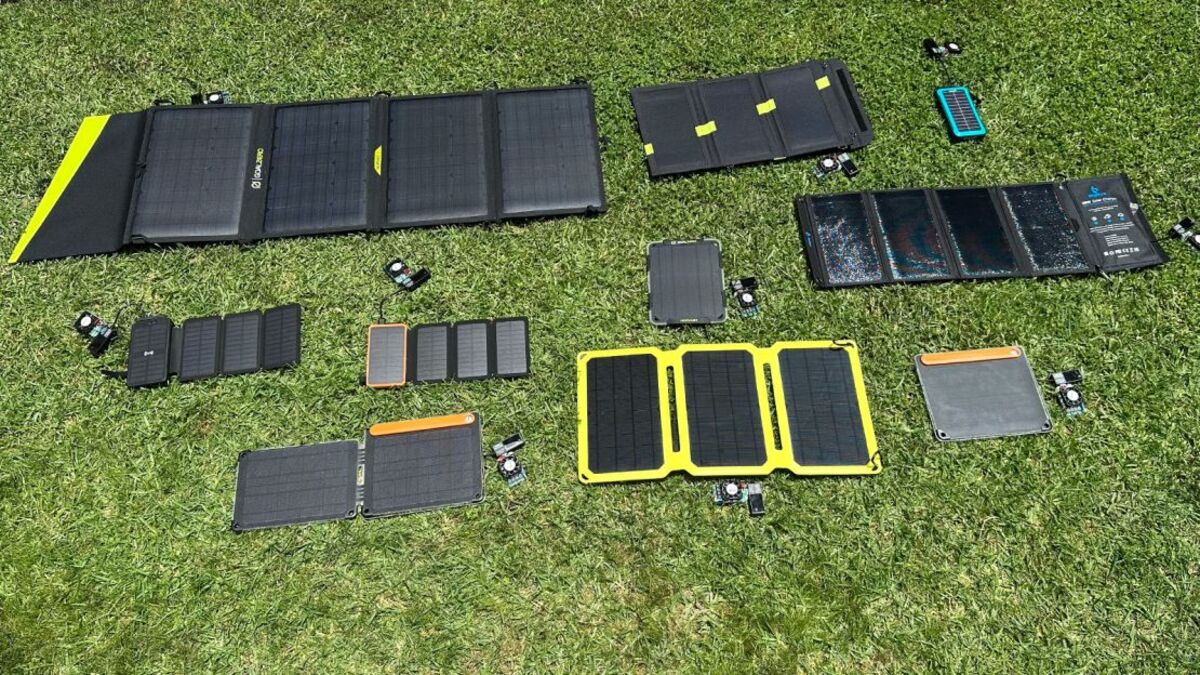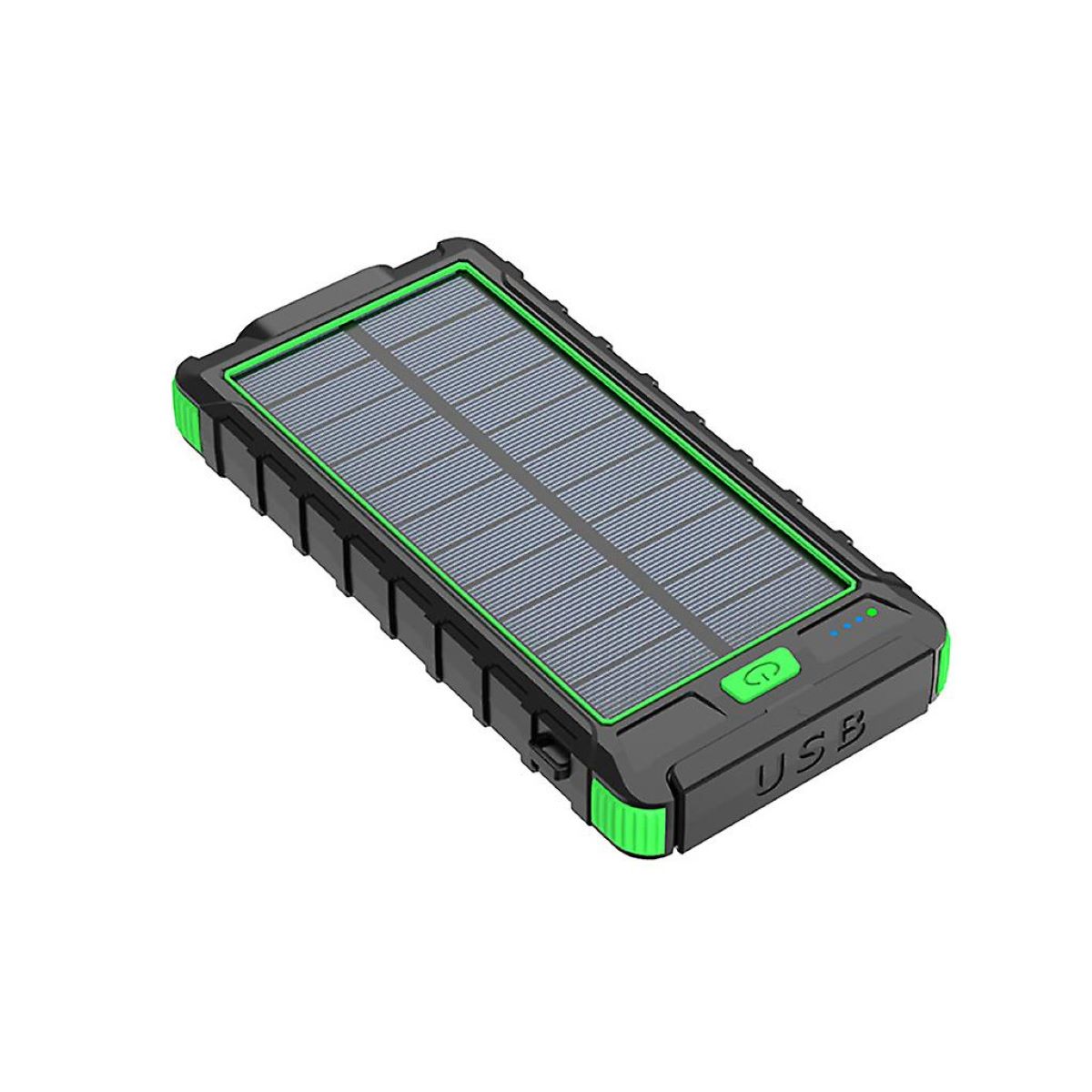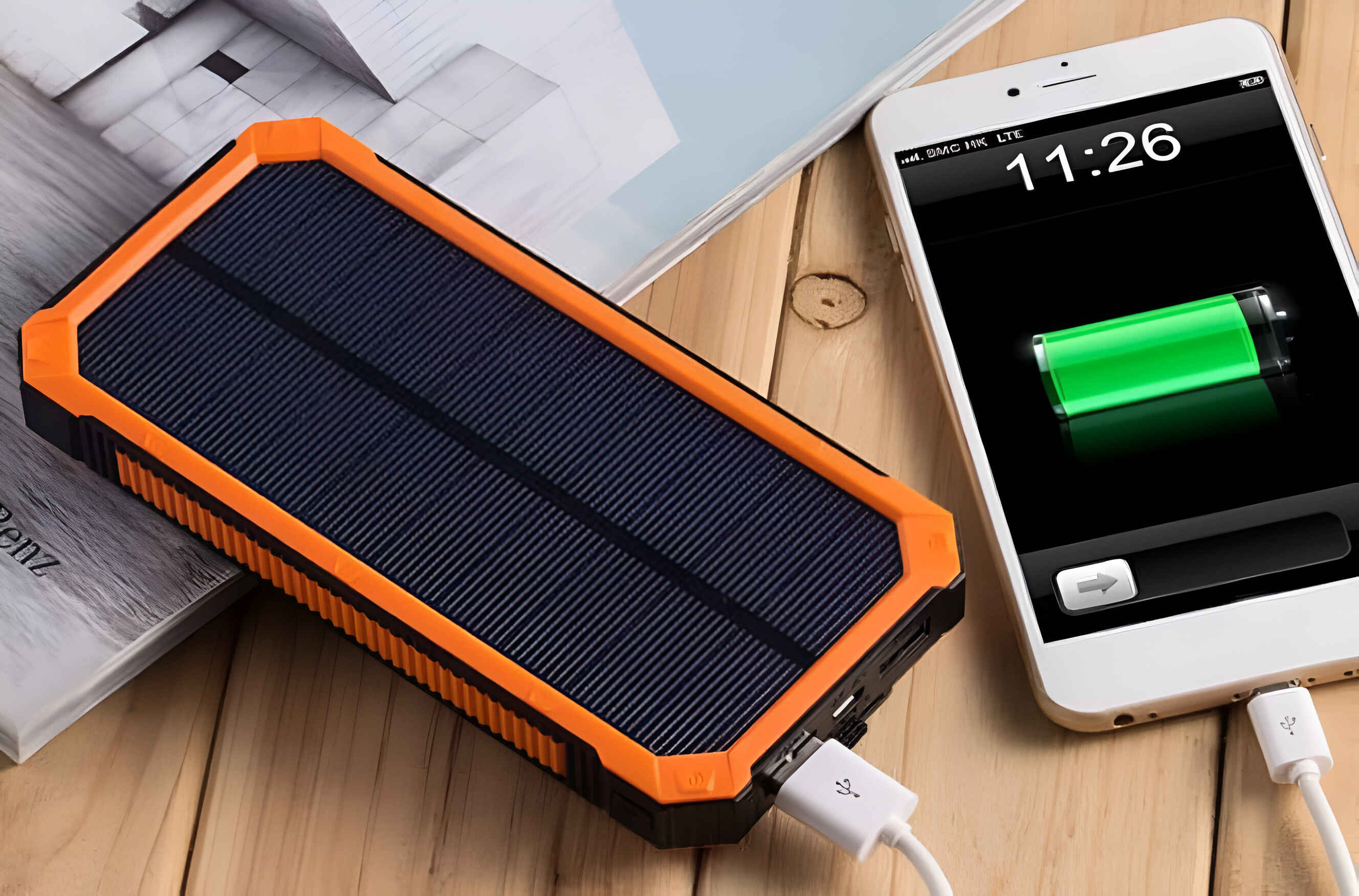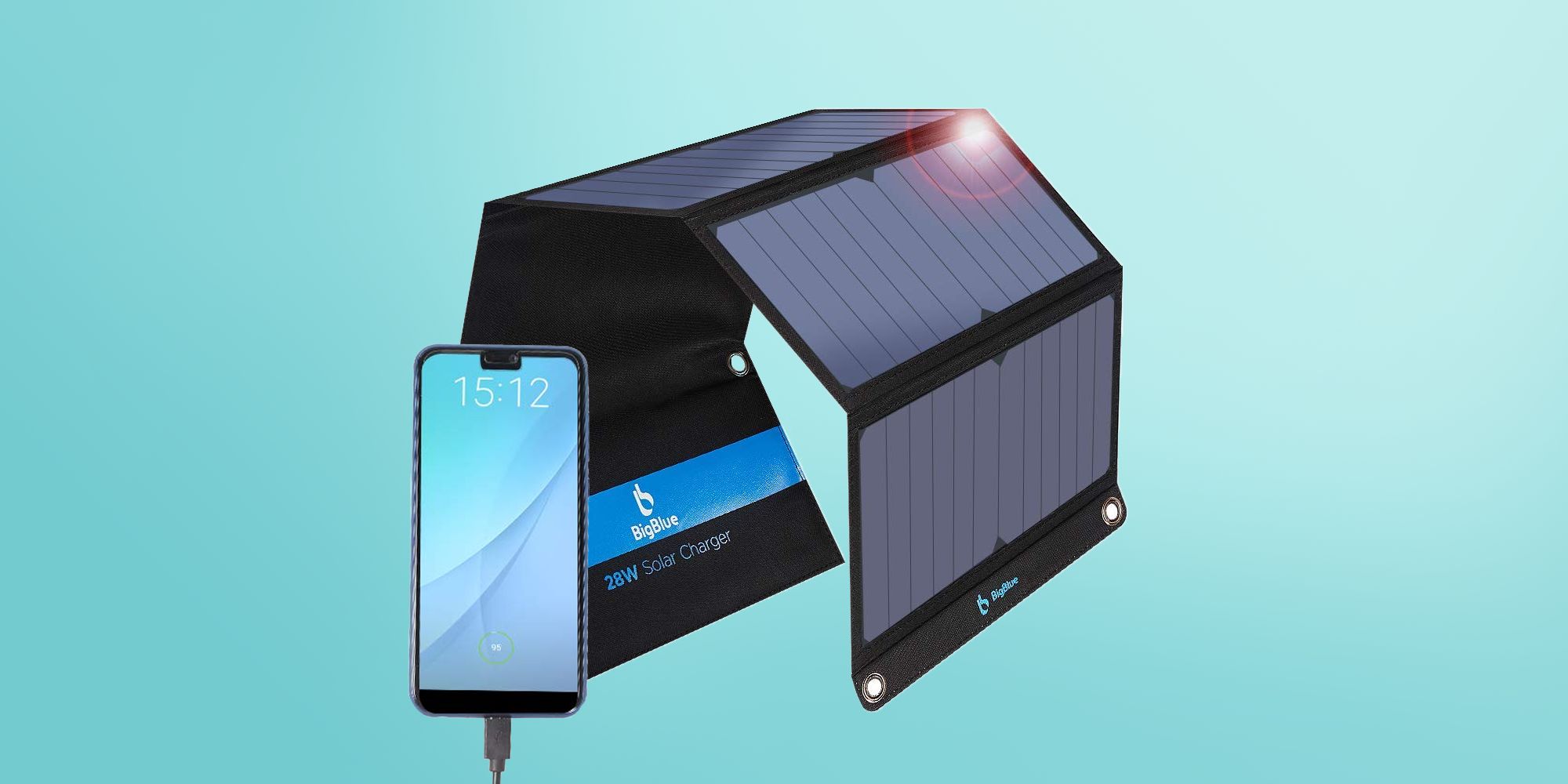Introduction
Welcome to our guide on the charging time of solar power banks. Solar power banks have revolutionized the way we stay connected on the go by harnessing the power of the sun to charge our devices. These portable chargers are designed to provide a convenient and sustainable solution for charging smartphones, tablets, and other electronic devices when you are away from a traditional power source.
Understanding the charging time of a solar power bank is essential for effectively using it to its full potential. In this article, we will explore the various factors that can impact the charging time of a solar power bank. Whether you are an outdoor enthusiast, a traveler, or simply someone who wants to be prepared for emergencies, having knowledge about the factors affecting charging time can help you make informed decisions when choosing a solar power bank and using it to its maximum capacity.
It is important to note that the charging time of a solar power bank can vary depending on several factors, including the size and efficiency of the solar panel, battery capacity, sunlight intensity and duration, as well as the chosen charging method. By understanding these factors, you can optimize your charging experience and ensure that your solar power bank is always ready to provide a reliable source of power when you need it the most.
In the following sections, we will delve deeper into each of these factors to provide a comprehensive understanding of how they contribute to the charging time of a solar power bank. So, without further ado, let’s explore the fascinating world of solar power bank charging times and discover how to make the most of this sustainable technology.
Factors Affecting Charging Time
The charging time of a solar power bank is influenced by several factors that determine the efficiency and speed at which it can convert sunlight into usable energy. Understanding these factors can help you manage your expectations and optimize the charging process. Here are the key factors that affect the charging time of a solar power bank:
- Solar Panel Size and Efficiency: The size and efficiency of the solar panel play a crucial role in determining how quickly a solar power bank can charge. Larger solar panels have a higher surface area, allowing them to capture more sunlight and generate more energy. Additionally, higher efficiency means that the solar panels can convert a greater percentage of sunlight into usable energy, further boosting the charging speed of the power bank.
- Battery Capacity: The capacity of the battery inside the solar power bank is another important factor that affects the charging time. A larger battery capacity means that it can store more energy, allowing the solar power bank to charge for a longer duration. However, keep in mind that while a higher capacity may lead to longer charging times, it also means that the power bank can provide more energy to charge multiple devices or sustain longer usage.
- Sunlight Intensity and Duration: The intensity and duration of sunlight directly impact the charging time of a solar power bank. Intense sunlight provides more energy to the solar panels, resulting in faster charging. Similarly, a longer duration of sunlight exposure gives the solar power bank more time to absorb energy from the sun. However, it’s important to note that factors such as weather conditions, cloud cover, and shading can significantly affect the availability and intensity of sunlight, thereby impacting the charging speed.
- Charging Methods: The chosen charging method also influences the charging time of a solar power bank. Most solar power banks offer two primary charging methods: direct sunlight charging and USB charging. Direct sunlight charging utilizes the solar panels to convert sunlight into energy. On the other hand, USB charging allows you to charge the power bank using a traditional power source and then use the stored energy later. USB charging may be faster initially, but direct sunlight charging provides the benefit of harnessing renewable energy.
By taking these factors into account, you can have a better understanding of the charging time of your solar power bank. While the specific charging time may vary depending on the model and specifications of the power bank, knowing the factors that affect charging can help you make informed decisions and ensure that your devices are always powered up when you need them.
Solar Panel Size and Efficiency
The size and efficiency of the solar panel are crucial factors that directly impact the charging time of a solar power bank. Let’s take a closer look at how these factors affect the charging process:
Solar Panel Size: The size of the solar panel plays a significant role in determining the charging speed of a solar power bank. Larger solar panels have a larger surface area, allowing them to capture more sunlight and convert it into energy. With a larger solar panel, more photons from the sun can be absorbed and converted into electrical energy, resulting in faster charging times.
Solar Panel Efficiency: The efficiency of a solar panel refers to how effectively it can convert sunlight into usable energy. Higher efficiency means that the solar panel can convert a greater percentage of incoming sunlight into electrical energy. This is typically measured by the panel’s power conversion efficiency (PCE) rating. Solar panels with higher PCE ratings can generate more energy from the same amount of sunlight, leading to faster charging times for solar power banks.
It’s important to note that the efficiency of solar panels can vary depending on the technology used and the quality of the materials. Monocrystalline and polycrystalline solar panels are among the most common types used in solar power banks. Monocrystalline panels generally have higher efficiency and are more expensive, while polycrystalline panels offer a lower cost alternative with slightly lower efficiency.
Additionally, advancements in solar panel technology are continuously improving their efficiency. Some solar power banks may feature innovative designs, such as multiple or flexible solar panels, to enhance efficiency and optimize charging speed. When choosing a solar power bank, consider the size and efficiency of the solar panel to ensure that it can provide the optimal balance between charging speed and portability.
Overall, the size and efficiency of the solar panel are important factors to consider when it comes to the charging time of a solar power bank. A larger solar panel with a higher efficiency rating will generally result in faster charging. However, keep in mind that other factors such as battery capacity and sunlight intensity also contribute to the overall charging time. By understanding and evaluating the combination of these factors, you can choose a solar power bank that meets your charging needs and provides efficient and reliable power on the go.
Battery Capacity
The battery capacity of a solar power bank is a critical factor that directly affects the charging time. Here’s how the battery capacity impacts the charging process:
Battery capacity: The capacity of the battery inside a solar power bank is measured in milliampere-hours (mAh) or watt-hours (Wh). It indicates how much energy the battery can store and deliver to your devices. A higher battery capacity means that the power bank can store more energy, enabling it to charge devices multiple times before needing to be recharged itself.
The larger the battery capacity, the longer it takes to charge the solar power bank fully. For example, a power bank with a battery capacity of 10,000mAh may take longer to charge compared to one with a capacity of 5,000mAh, assuming all other charging conditions remain the same. However, a higher capacity allows the power bank to provide more energy for charging devices and extends usage time between charges.
It’s worth noting that the charging time is also influenced by the power input of the solar power bank. A higher input power rating can reduce the overall charging time by allowing the power bank to accept a greater amount of charge during the charging process.
When choosing a solar power bank, consider your charging requirements and usage patterns. If you regularly need to charge multiple devices or require an extended power supply, a solar power bank with a larger battery capacity might be a better fit. However, keep in mind that larger battery capacities typically result in longer charging times.
Additionally, it is essential to ensure that the solar power bank has a battery capacity that aligns with your needs. A power bank with too low a capacity may not provide sufficient power, while one with a capacity that exceeds your requirements may be bulky and take longer to charge.
To optimize the charging time, it is advisable to choose a solar power bank with a battery capacity that strikes a balance between your charging needs and portability. This way, you can ensure that your devices are adequately powered while minimizing unnecessary charging delays.
Sunlight Intensity and Duration
The intensity and duration of sunlight are crucial factors that directly impact the charging time of a solar power bank. Let’s take a closer look at how these factors affect the charging process:
Sunlight Intensity: The intensity of sunlight refers to the amount of energy present in the sunlight. Higher intensity sunlight provides more energy to the solar panels, resulting in faster charging times. This is particularly important in areas with high levels of direct sunlight, such as during sunny days or when using the solar power bank in open spaces with minimal obstructions.
However, it’s important to note that sunlight intensity can vary depending on various factors such as weather conditions, time of day, and geographical location. Cloud cover, rain, or other adverse weather conditions can significantly reduce the intensity of sunlight, leading to slower charging times. Similarly, using the solar power bank in shaded areas or under trees can limit the amount of direct sunlight reaching the panels, affecting the charging speed.
Sunlight Duration: The duration of sunlight exposure also affects the charging time of a solar power bank. The longer the duration of sunlight, the more time the solar panels have to convert sunlight into usable energy. Solar power banks typically require several hours of direct sunlight exposure to fully recharge. While some power banks may have indicators that show the charging progress, it is important to allow sufficient time for the panels to absorb energy. It is important to note that the charging time may vary depending on the model and specifications of the power bank.
To maximize the charging speed, it is recommended to place the solar power bank in an area with direct sunlight exposure and ensure that the solar panels are positioned towards the sun for optimal sunlight absorption. Consider the time of day and the surroundings to find the best location for maximum sunlight exposure.
While sunlight intensity and duration are essential factors in charging a solar power bank, it’s important to be aware of the environmental conditions and adjust expectations accordingly. Certain geographical areas or seasons may have less sunlight availability, which can result in longer charging times. Additionally, it’s advisable to have alternative charging methods available, such as USB charging, to ensure a reliable power source when sunlight conditions are not optimal.
By considering sunlight intensity and duration, you can make informed decisions to optimize the charging time of your solar power bank and ensure that it is efficiently charging and ready to provide power whenever you need it.
Charging Methods
The charging method chosen for a solar power bank can significantly impact the charging time. Let’s explore the two primary charging methods available for solar power banks:
Direct Sunlight Charging: Direct sunlight charging is the primary and most common method used to charge solar power banks. With this method, the solar panels on the power bank harness the energy from the sun and convert it into electrical energy. Direct sunlight charging is a sustainable and environmentally friendly option as it utilizes renewable energy sources.
When using direct sunlight charging, it is important to position the solar power bank in an area with direct exposure to sunlight. This ensures that the solar panels absorb as much sunlight as possible for efficient energy conversion. However, it is important to note that the charging time can vary due to factors such as sunlight intensity, duration, and any shading or obstructions that may block direct sunlight from reaching the panels.
USB Charging: Many solar power banks also offer USB charging capabilities, allowing them to be charged using a traditional power source such as a wall outlet or computer. USB charging provides a convenient and reliable alternative when direct sunlight is not readily available or when you simply need to charge the power bank quickly.
USB charging typically offers faster initial charging times compared to direct sunlight charging, especially if you have access to a higher-powered USB port or charger. However, it is important to remember that USB charging does not utilize renewable energy and may require access to an electrical outlet.
It is worth noting that some solar power banks allow for simultaneous charging using both direct sunlight and USB methods. This provides flexibility and ensures that the power bank can charge even in less sunny conditions or when a power outlet is available.
When choosing a solar power bank, consider the charging methods that are offered and assess your specific needs. If you prioritize sustainability and want to rely on renewable energy, direct sunlight charging is the way to go. On the other hand, if you need quick and convenient charging, USB charging can be a reliable option.
By understanding the different charging methods available for solar power banks, you can choose the method that best suits your needs and optimize the charging time to ensure a reliable and efficient source of power for your devices.
Direct Sunlight Charging
Direct sunlight charging is the primary method used to charge solar power banks. It harnesses the power of the sun and converts sunlight into energy using the solar panels on the power bank. Let’s explore this charging method in more detail:
Direct sunlight charging is a sustainable and environmentally friendly option as it utilizes renewable energy sources. By capturing sunlight and converting it into electrical energy, solar power banks provide a reliable and green solution for charging devices on the go.
When using direct sunlight charging, it is important to position the solar power bank in an area with direct exposure to sunlight. This allows the solar panels to capture as much sunlight as possible for efficient energy conversion. Placing the power bank in direct sunlight ensures optimal charging speed and reduces the overall charging time.
However, it’s important to consider various factors that can impact direct sunlight charging. Sunlight intensity, duration, and any shading or obstructions can affect the charging time. High sunlight intensity provides more energy to the solar panels, resulting in faster charging. Conversely, factors like clouds, rain, or shade can reduce the intensity of sunlight and slow down the charging process.
Additionally, the duration of sunlight exposure plays a significant role in the charging time. Solar power banks typically require several hours of direct sunlight exposure to fully charge. It’s important to allow sufficient time for the panels to absorb energy and convert it into electrical power. Some power banks may have indicators that show the charging progress, giving you a better idea of how long it takes to reach a full charge.
During direct sunlight charging, it’s important to keep the solar panels clean and free from dust, dirt, or any other obstructions. Cleaning the panels regularly ensures optimal sunlight absorption and boosts the charging efficiency of the solar power bank.
Despite some limitations, direct sunlight charging remains a reliable and sustainable charging method for solar power banks. By taking advantage of the power of the sun, you can harness renewable energy to keep your devices powered up and reduce your carbon footprint.
When choosing a solar power bank, consider the size and efficiency of the solar panels, as well as the overall capacity of the power bank, to ensure optimal direct sunlight charging performance. Utilizing this environmentally friendly method will not only provide a convenient source of power on the go but also contribute to a greener and more sustainable future.
USB Charging
USB charging is another method available for charging solar power banks. It provides a convenient and reliable alternative to direct sunlight charging when a traditional power source is readily accessible. Let’s take a closer look at USB charging for solar power banks:
USB charging allows you to charge your solar power bank using a standard USB port or charger, such as those found on a wall outlet or computer. This method offers quick and efficient charging, especially if you have access to a higher-powered USB port or charger.
One of the key advantages of USB charging is its convenience. It allows you to charge your power bank using a reliable power source, without the need for direct sunlight or reliance on weather conditions. This makes it especially beneficial in situations where immediate charging is needed or when direct sunlight charging is not feasible.
USB charging may be faster compared to direct sunlight charging, especially during the initial charging period. This is due to the constant and steady power supply provided by the USB port or charger. However, it’s important to note that USB charging does not utilize renewable energy sources, and it requires access to an electrical outlet. It is a viable option when sustainable charging may not be a priority or when sunlight conditions are not favorable.
Many solar power banks on the market offer the option for simultaneous charging using both direct sunlight and USB methods. This provides flexibility and ensures that the power bank can charge regardless of the availability of sunlight or power outlets. As a user, you have the freedom to choose the most appropriate method based on your specific charging needs and circumstances.
When considering USB charging, it’s essential to have the necessary USB cables or adapters compatible with your solar power bank. Ensure you have the correct connectors to connect your devices for charging as well.
By utilizing USB charging for your solar power bank, you can enjoy the convenience and flexibility of a reliable power source, whether you are indoors, the weather is unfavorable, or you simply need a quick charge. It complements the direct sunlight charging method and expands your options for charging your devices on the go.
When selecting a solar power bank, it’s always beneficial to choose one that supports USB charging, allowing you to have a versatile power solution that can adapt to a variety of charging scenarios.
Time Required to Fully Charge a Solar Power Bank
The time required to fully charge a solar power bank can vary depending on several factors, including the capacity of the power bank, the size and efficiency of the solar panel, sunlight intensity and duration, and the chosen charging method. Let’s explore these factors and their impact on the charging time:
Capacity of the Power Bank: The capacity of the power bank, measured in milliampere-hours (mAh), is a key factor in determining the charging time. A higher capacity power bank will generally take longer to charge compared to one with a lower capacity, assuming all other charging conditions remain the same. However, a higher capacity power bank can store more energy for multiple device charges or longer usage between recharges.
Size and Efficiency of the Solar Panel: The size and efficiency of the solar panel directly influence the charging speed of the power bank. A larger solar panel provides a larger surface area to capture more sunlight, leading to faster charging times. Additionally, higher efficiency panels can convert a greater percentage of sunlight into usable energy, further boosting the charging speed.
Sunlight Intensity and Duration: Sunlight intensity and duration play a significant role in the charging time of a solar power bank. Higher sunlight intensity provides more energy to the solar panels, resulting in quicker charging. Similarly, longer duration of sunlight exposure allows the power bank more time to absorb energy. However, it’s important to note that factors such as weather conditions, cloud cover, and shading can impact the availability and intensity of sunlight, potentially slowing down charging speeds.
Charging Method: The chosen charging method can also affect the time required to fully charge a solar power bank. Direct sunlight charging utilizes the power of the sun, while USB charging relies on electrical power sources. Generally, direct sunlight charging may take longer but allows for sustainable and renewable energy utilization. USB charging, on the other hand, can be faster, especially when using higher-powered USB ports or chargers, but it requires access to an electrical outlet.
It’s important to note that there is no fixed or universal time to fully charge a solar power bank, as it depends on the specific model, its specifications, and the aforementioned factors. Manufacturers may provide estimated charging times based on optimal conditions, but the actual charging time can vary in real-world scenarios.
To get the most out of your solar power bank and minimize charging time, it is recommended to position the power bank in direct sunlight with minimal obstructions, ensure the solar panels are clean, and utilize higher intensity sunlight whenever possible. Monitoring the charging progress using any available indicators on the power bank can also give you an idea of how close it is to being fully charged.
Ultimately, the time required to fully charge a solar power bank can vary depending on multiple factors. By understanding these factors and optimizing the charging conditions, you can maximize the efficiency of your solar power bank and ensure that it is fully charged and ready to provide a reliable source of power when you need it.
Conclusion
Understanding the factors that affect the charging time of a solar power bank is crucial for optimizing its performance and ensuring a reliable source of power for your devices. Factors such as the size and efficiency of the solar panel, battery capacity, sunlight intensity and duration, and the chosen charging method all play vital roles in determining the charging time of a solar power bank.
The size and efficiency of the solar panel directly impact the speed at which the solar power bank can convert sunlight into usable energy. Larger panels with higher efficiency ratings generate more energy, resulting in faster charging times. The battery capacity of the power bank also matters, with larger capacities taking longer to charge but providing more energy for multiple device charges or extended usage.
Sunlight intensity and duration are critical when it comes to direct sunlight charging. Higher sunlight intensity and longer exposure periods lead to faster charging, but weather conditions and shading should be considered as they can affect the availability and intensity of the sunlight. USB charging offers a convenient alternative, providing quick and reliable charging using traditional power sources, though it does not utilize renewable energy.
It’s important to note that there is no fixed time for fully charging a solar power bank, as it varies depending on the specific model, charging conditions, and other factors mentioned above. However, by optimizing the charging conditions, such as positioning the power bank in direct sunlight, cleaning the solar panels regularly, and assessing the available charging methods, you can reduce the charging time and maximize the efficiency of your solar power bank.
When choosing a solar power bank, consider your charging needs and priorities. Select one with a suitable balance of battery capacity, solar panel size and efficiency, and charging options that align with your requirements. This way, you can ensure that you have a reliable and sustainable source of power on the go, keeping your devices charged and ready whenever you need them.
So, whether you are an outdoor enthusiast, a traveler, or someone who values sustainability, understanding the factors impacting the charging time of a solar power bank allows you to make informed decisions and optimize its performance. Embrace the power of the sun, harness renewable energy, and enjoy the benefits of a portable, eco-friendly charging solution with a solar power bank.







